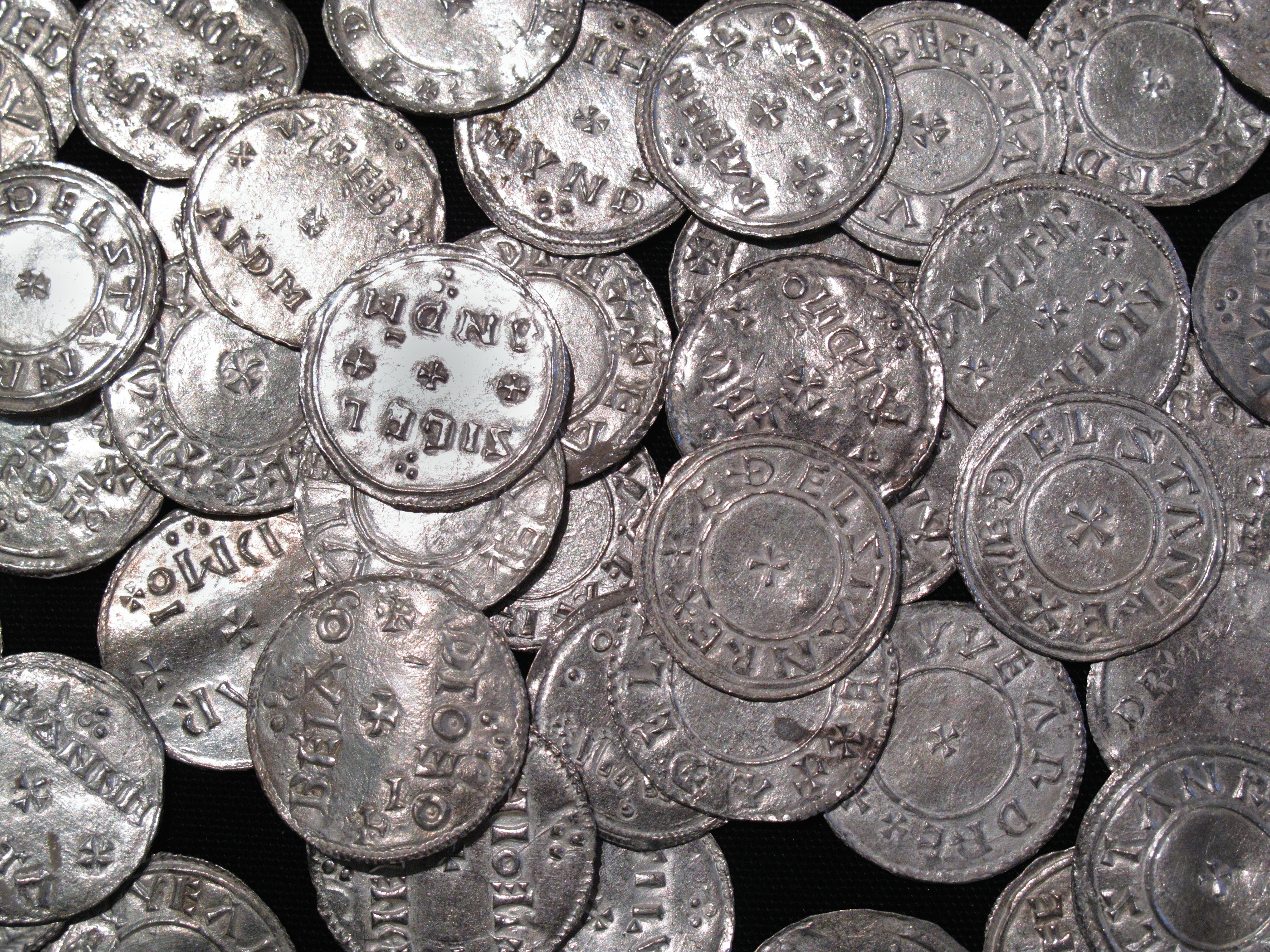
For some specific data points on hostage payments, tributes, and bribes paid to the Vikings, check out Janet Nelson’s chapter 2, The Frankish Empire of The Oxford Illustrated History of the Vikings, edited by Peter Sawyer.
On page 37, she lists some specific tributes and ransoms paid out of the Frankish Empire during the 9th century:
| year | location, hostage | pounds gold | pounds silver | silver & gold |
| 841 | St. Wandrill; 68 prisoners | 28 | ||
| 845 | Paris | 7,000 | ||
| 858 | St. Denis; for Abbot Louis & brother | 686 | 3,250 | |
| 860 | Somme | 5,000 | ||
| 862 | Loire | 6,000 | ||
| 866 | Seine | 4,000 | ||
| 877 | Seine | 5,000 | ||
| 882 | Lotharingia | 2,412 | ||
| 884 | West Frankia | – | – | 12,000 |
| total for 9 listed payments | 686 | 23,278 | 21,412 | |
I will convert that to the equivalent amount of silver so there is single point estimate for the string of guesses and estimates and not documented payments.
Ratio of gold to silver is 8:1 in the Viking era, as best I can tell. I doubt there is any way to find out the mix of gold and silver in the combined amounts above, so I will assume out of thin air that 10% of the ‘gold and silver’ payouts were in gold.
So, combining that data and those assumptions into silver equivalents gives the following:
| information: | pounds gold | pounds silver | silver & gold |
| above total | 686 | 23,278 | 21,412 |
| ratio of 1 oz gold = 1 oz silver | (686) | 5,488 | |
| my assumption of 1/10th gold, 9/10th silver | 2,141 | 19,271 | (21,412) |
| ratio of 1 oz gold = 8 oz silver | (2,141) | 17,128 | – |
| subtotal, equivalent amount of silver | – | 65,165 | – |
| rounded | 65,000 |
Those specific data points add up to somewhere around 65,000 pounds of silver.
In the book’s chapter 3, The Vikings in England, Simon Keynes lists payouts in England. A huge force of 90 or more ships with perhaps 2,000 or 3,000 warriors arrives in 991. Olaf Tryggvason of Norway and Sven Forkbeard are reportedly amongst the leaders.
This band receives 10,000 pounds of tribute in 991, which text says was mixture of gold and silver.
They continue marauding around England for a few years and after wintering in Southampton, are paid large amounts of provisions and 16,000 pounds in 995.
Most of those warriors started marauding again in 997, cross to Normandy in 1000, return to England, and in addition to whatever they can plunder are paid another 24,000 pounds in 1002.
A famine in England during 1005 persuaded the Vikings to go home for a while.
Another fleet arrived in 1006. They were paid 36,000 pounds to return home, and they did so in 1007.
Yet another fleet arrived in 1009. They were paid 48,000 pounds to go away, and they did.
Kings Sven and Knut were able to demand a payment of 82,500 pounds in 1016. They were paid in 1018. It took two years to extract that much wealth from the church, landed class, and peasants. Text says this was probably a combination of gold, silver, precious jewels, and church plate (items used during worship which were made of gold or silver).
That gives the following hard money payout over a twelve-year period:
| year | pounds paid |
| 991 | 10,000 |
| 995 | 16,000 |
| 1002 | 24,000 |
| 1007 | 36,000 |
| 1012 | 48,000 |
| 1018 | 82,500 |
| total | 216,500 |
That is a mixture of gold, silver, and precious jewels, but I won’t even try to convert it to a silver-only equivalent.
Keep in mind as you look at that massive amount of payments that it is payouts to go away. That does not include the wealth the Vikings plundered as they raided around England, the value of livestock and food they were paid, or the amount of livestock and food they plundered.